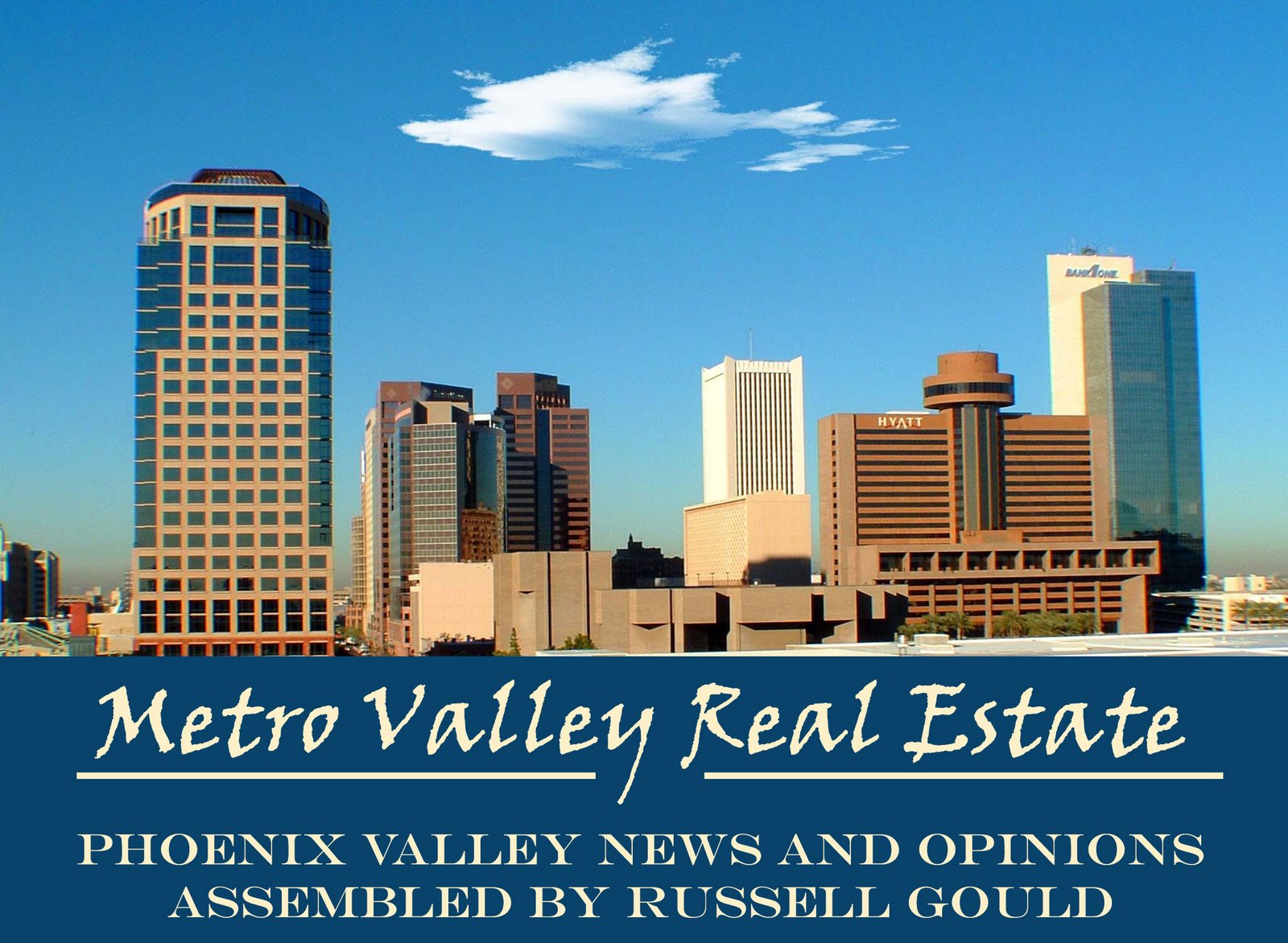by William Hermann - Feb. 4, 2009 08:44 AM
The Arizona Republic
Just as Phoenix developed a "Power Corridor" on East Camelback Road and Tempe is developing a commercial and residential power center along Mill Avenue, East Valley officials see a corridor of educational, healthcare and commercial development blossoming along, appropriately enough, Power Road.
In a Valley area that only a few years ago was considered the hinterlands - it's 22 miles from downtown Phoenix - developers and city officials see a 15 miles-long swath of elegant homes, modern health facilities, a large airport, upscale retail malls and excellent schools, colleges and universities bringing an economic bonanza to Mesa, Gilbert, Chandler and Queen Creek.
Mesa's Mayor Scott Smith, in a recent press briefing, said many of the components of an educational power center along Power Road already are in place. He said while Mesa has "great educational assets throughout the city," Power Road is becoming an educational focal point.
"When you start up around the McDowell-McKellips area you have the (Mesa Community College) Red Mountain campus, and as you continue southward you go past Mesa Public Schools with their Academy for Advanced Studies and Red Mountain High School and that whole cluster.
"Moving south, right off of Power and Baseline you have the A.T. Still (medical school) campus. And then you get into Gateway where you have, of course, Polytechnic, Chandler-Gilbert (Community College), the University of North Dakota has a presence there, and EVIT (East Valley Institute of Technology) is ready to build a branch campus there. That entire area we call the Power Road Knowledge Corridor."
Roc Arnett, President of the East Valley Partnership, says that one day, Power Road will be the center of the East Valley.
And he says it's already way more than an educational corridor.
"Look at what is already there as far as healthcare---Banner Baywood (hospital) the Banner Heart complex and the A.T. Still dental school," he said. "Then there's a lot of retail: Superstition Springs Mall, Mesa Pavilions, and the malls all around them thriving. Phoenix/Mesa Gateway Airport is a big success and the airport of the future; the Gaylord Resort is going to light up that area; and between Elliot and Warner, land on both sides of the street are being planned for millions of square feet of office space.
"It's truly a power . . . make that the Power Corridor, and it's going to be quite an amazing place."
It is not, of course, by accident that development is sprouting along Power Road. Ten years ago, city officials saw that with Arizona State's University's commitment to developing the Polytechnic campus at Williams Field and Power roads into a major institution, and with the transformation of the old Williams Air Force Base into the Valley's second major airport, significant development would be anchored by the big campus and increasingly busy airport.
Mesa Economic Development project manager Scott Rigby said the obvious assets of the corridor have made it so, "we don't have to steer people there: people have latched onto what . . . has evolved as a key corridor for development and it's obvious that's the place to be."
Rigby says Valley freeway construction has been instrumental in the creation of the Power Corridor.
"Power Road connects to the (Loop) 202 Red Mountain Freeway in the north, the (U.S.) 60 Freeway in the center and the 202 Santan Freeway in the south," he said. "Few roads in the Valley have that much freeway interaction. And Power Road traverses Mesa, Gilbert, Chandler and Queen Creek . . . and is one of three exits points for Queen Creek. So Power Road will only get more prominent as that whole area grows."
Rigby and Arnett both say that a key to the development of the Power Corridor is the amount of vacant land that still exists along both sides. Both say the Morrison family's farm holdings that straddle Power Road between Warner and Elliot roads is a prime area.
"That Morrison family land is perfect for housing, commercial and industrial development . . . and a lot of it," Rigby said. "Employers see that area in the inner loop between the 60 and 202 freeways, see the open space, see the excellent educational facilities, see the airport and consider it the perfect location."
Veteran Valley zoning attorney, developer and academic Grady Gammage agrees that the Power Road Corridor is an area of immense promise. But he notes that the Phoenix- Mesa Gateway Airport, "is a wonderful magnet, but it's also a barrier."
"The relationship between Power Road and Polytechnic and all things on both sides of Gateway Airport is not yet fully figured out," he said "Any airport is a barrier. You can't drive where there are runways, and those are very long runways. The airport is huge-it's the size of Sky Harbor--and the runways are on a diagonal. It's a major barrier and big things are planned on both sides."
Nevertheless, Gammage said, the pluses of the airport outweigh the navigational barrier it represents. Combined with the freeways that bring traffic to and from Power Road, the airport represents a powerful engine of economic development.
Arnett sees the airport as the centerpiece of east Valley development-and much of tied to Power Road:
"One day the center of the East Valley will be the Power Corridor, to the north and south," Arnett said. "And the epicenter of the East Valley will be the Gateway Airport. And it's not so far in the future.
"In fact, it's happening right now."

No comments:
Post a Comment